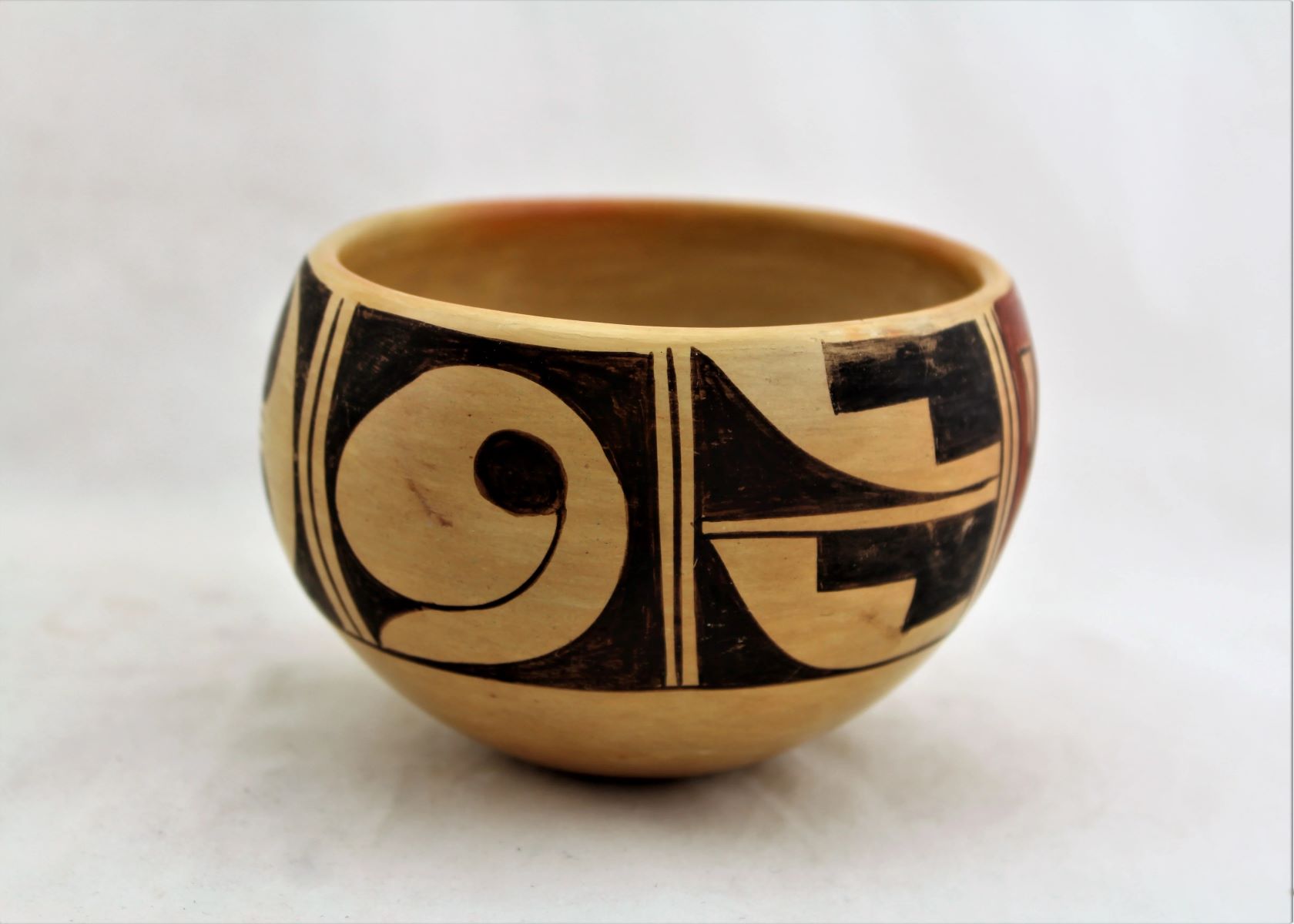
Hopi pottery is a rich and cherished art form that dates back thousands of years. The Hopi people, Native Americans from the Southwestern United States, have been creating stunning pottery pieces using traditional techniques and symbols that hold deep cultural significance. In this article, we will explore 10 fascinating facts about Hopi pottery, shedding light on its history, techniques, symbolism, and importance. From the distinctive designs to the religious and ceremonial aspects, Hopi pottery is not just about creating beautiful objects, but also a way for the Hopi people to connect with their ancestors and preserve their heritage. So, let’s dive into the world of Hopi pottery and discover its unique and captivating aspects.
Key Takeaways:
- Hopi pottery is a traditional Native American craft that uses local clay and intricate hand-coiling techniques to create stunning, culturally significant designs.
- Purchasing Hopi pottery directly from Hopi artists supports the local community and helps sustain this ancient art form, ensuring its continuation for future generations.
Hopi Pottery is a Traditional Native American Craft
Hopi pottery is a centuries-old craft of the Hopi tribe, a Native American community known for their rich cultural heritage. These talented artisans have been creating stunning pottery using traditional techniques for generations.
The Clay Used in Hopi Pottery Comes from Local Deposits
The Hopi people gather clay from specific deposits within their ancestral lands. The clay is carefully selected for its unique properties, including its texture, color, and ability to withstand the firing process.
Hopi Pottery is Handcrafted and Coiled
Creating Hopi pottery involves intricate hand-coiling techniques. The pottery is formed by rolling long strands of clay into coils, which are then carefully stacked on top of each other to build the desired shape and size.
Traditional Hopi Pottery Designs Have Symbolic Meanings
Hopi pottery is known for its distinctive designs, often featuring intricate patterns and symbols. These designs hold deep cultural and spiritual significance, representing elements of nature, stories, and beliefs passed down through generations.
Hopi Pottery is Decorated with Natural Pigments
The vibrant colors seen on Hopi pottery are created using natural pigments sourced from minerals and plants found in the surrounding environment. These pigments are carefully applied to the pottery before the firing process.
Firing Hopi Pottery is a Complex Process
The firing of Hopi pottery is a meticulous process that involves building and maintaining a carefully controlled fire. This firing technique, known as oxidation firing, gives the pottery its unique colors and surface textures.
Hopi Pottery is Functional and Decorative
Hopi pottery serves both utilitarian and artistic purposes. Traditionally, it was used for cooking, storage, and ceremonial purposes. Today, it is highly valued for its cultural significance and serves as beautiful decorative pieces.
Hopi Pottery is Collected Worldwide
The beauty and cultural significance of Hopi pottery have made it highly sought after by collectors around the world. Many museums and private collectors showcase these exquisite pieces, preserving and celebrating Hopi artistic traditions.
Hopi Pottery Making is a Family Tradition
The art of pottery making is often passed down through generations in Hopi families. Parents teach their children the techniques and cultural significance, ensuring the continuation of this cherished tradition.
Hopi Pottery Supports the Hopi Community
Purchasing Hopi pottery directly from Hopi artists supports the local community and helps sustain this ancient art form. It provides economic opportunities for Hopi artists to continue creating their exceptional pottery.
Conclusion
In conclusion, Hopi pottery is a rich and important art form that has a deep cultural significance. It showcases the skills and creativity of the Hopi people, reflecting their connection to the land and their spiritual beliefs. Through these 10 Hopi pottery facts, we have learned about the techniques, symbolism, and historical significance of this unique pottery tradition. From the intricate designs to the use of natural materials, Hopi pottery continues to captivate and inspire people around the world. Whether you are a collector, an art enthusiast, or simply interested in learning about different cultures, exploring the world of Hopi pottery is a fascinating journey that reveals the beauty and depth of Native American art.
FAQs
1. What is Hopi pottery?
Hopi pottery refers to the traditional ceramic art form crafted by the Hopi people, who are Native Americans living in northeastern Arizona.
2. What are the materials used in Hopi pottery?
Hopi pottery is made using a clay mixture found within the Hopi reservation, known as kaolin clay. Other materials used include various natural pigments for coloring and polishing stones for finishing touches.
3. What are the different types of Hopi pottery?
Hopi pottery can be categorized into three main styles: Sikyatki, Polychrome, and Black-on-Black. Each style has its own distinct design elements and techniques.
4. What is the significance of symbol and design in Hopi pottery?
Symbolism plays a crucial role in Hopi pottery, with each design representing stories, ceremonies, and spiritual beliefs of the Hopi people. Elements like geometric patterns, animals, and nature symbols can be found in Hopi pottery designs.
5. How is Hopi pottery made?
Hopi pottery is made using the coil and scrape technique, where the potter rolls out long, thin coils of clay and carefully stacks them to create the desired shape. The surface is then smoothed and polished with a stone or natural material.
6. Are there any traditional Hopi pottery artists?
Yes, there are many skilled Hopi pottery artists who have learned this craft from their ancestors and continue to produce exceptional pieces of artwork.
7. Where can I purchase authentic Hopi pottery?
A number of galleries, museums, and online platforms specialize in selling authentic Hopi pottery. It is important to seek out reputable sources to ensure you are purchasing genuine pieces.
8. How can I care for my Hopi pottery?
It is recommended to handle Hopi pottery with care and avoid exposing it to extreme temperatures or sudden changes in humidity. Dusting with a soft brush or cloth is usually sufficient for cleaning.
9. Are there any Hopi pottery exhibitions or events?
Yes, there are several exhibitions and events dedicated to showcasing Hopi pottery. These events provide an opportunity to learn more about the art form, meet artists, and purchase unique pieces directly.
10. How can I learn more about Hopi pottery?
There are various books, documentaries, and websites available that delve deeper into the world of Hopi pottery. Additionally, visiting museums and cultural centers can offer a firsthand experience and knowledge.
Was this page helpful?
Our commitment to delivering trustworthy and engaging content is at the heart of what we do. Each fact on our site is contributed by real users like you, bringing a wealth of diverse insights and information. To ensure the highest standards of accuracy and reliability, our dedicated editors meticulously review each submission. This process guarantees that the facts we share are not only fascinating but also credible. Trust in our commitment to quality and authenticity as you explore and learn with us.


